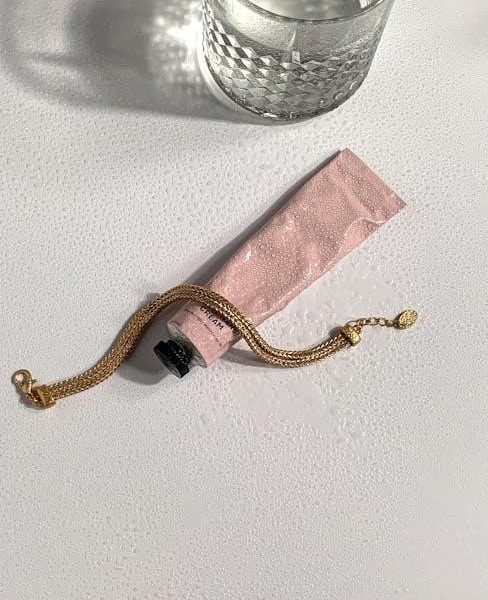Cutting a steerer tube is a precise process requiring accuracy and safety to ensure proper bike setup and performance. Specialized tools and guides help achieve clean, straight cuts.
What is a Steerer Tube?
The steerer tube is a critical component of a bicycle’s fork, connecting the front wheel to the handlebars. It is a cylindrical tube that passes through the headset and is typically made of steel, aluminum, or carbon fiber. The tube’s length must be precisely adjusted to fit the rider’s needs, ensuring proper handling and safety. Its role is to house the fork’s bearings and provide a mounting point for the stem and handlebars. The steerer tube’s material and dimensions vary, requiring careful measurement and cutting for optimal bike setup.
Why Cutting the Steerer Tube is Necessary
Cutting the steerer tube is essential for achieving the correct fit and riding position. A tube that is too long can limit the number of spacers used, while one that is too short may not allow proper stem installation; Cutting ensures the stem sits flush with the top of the tube, optimizing handling and safety. It is often required when installing a new fork, adjusting the bike’s geometry, or personalizing the setup to the rider’s preferences. Proper cutting ensures a clean, precise fit and prevents potential safety hazards.

Tools and Materials Needed
Essential tools include a hacksaw, pipe cutter, or dedicated cutting guide. Materials like a deburring tool and measuring tape ensure precision and safety during the process.
Essential Tools for Cutting
A hacksaw or pipe cutter is necessary for making precise cuts; A dedicated steerer cutting guide ensures straight cuts and prevents errors. Additional tools like a deburring tool and measuring tape are crucial for smoothing edges and ensuring accuracy. For carbon steerer tubes, a ceramic or carbon-specific blade is recommended to avoid damage. Using the right tools helps maintain safety and ensures a professional-quality finish. Investing in a high-quality cutting guide, such as the Park SG-6 or Mighty tube cutting guide, can significantly improve results.
Recommended Materials for Precision
For precise cutting, use high-speed steel or tungsten carbide blades, as they provide cleaner cuts. A mitre block or dedicated cutting guide, such as the Park SG-6, ensures straight cuts. Ceramic or carbon-specific blades are ideal for carbon steerer tubes to prevent damage. Always use a stable workbench and clamp the fork securely to maintain accuracy. A deburring tool is essential for smoothing edges post-cutting, ensuring safety and a professional finish. These materials collectively enhance precision and safety during the steerer tube cutting process.

Preparation and Measurement
Insert the fork into the headtube, add spacers and stem, then mark the steerer tube at the desired length using a marker or scribe for accurate cutting.
How to Measure the Steerer Tube
To measure the steerer tube accurately, install the fork in the headset with the dust cap and desired spacers. Place the stem on top, ensuring it’s flush with the spacers. Use a marker or scribe to mark the steerer tube at the desired cutting length. Double-check the measurement to confirm accuracy, as incorrect cuts can affect bike fit and performance. Ensure the fork is fully seated in the headset before marking to avoid errors. This step is crucial for achieving the correct height and alignment.
Marking the Cutting Line Accurately
After measuring, use a marker or scribe to mark the steerer tube precisely at the cutting point. Ensure the mark is straight and visible. For accuracy, clamp a cutting guide or mitre block around the tube, aligning it with the mark. This prevents the saw from wandering and ensures a straight cut. Double-check the guide’s alignment before proceeding. A well-marked line is essential for a clean, precise cut, minimizing the risk of uneven edges or misalignment during the cutting process.

Safety Tips and Precautions
Always ensure a stable workspace, wear protective eyewear, and handle cutting tools with care to avoid accidents and maintain control during the steering tube cutting process.
Ensuring a Safe Working Environment
A safe workspace is crucial when cutting a steerer tube. Clear the area of clutter and ensure good lighting. Secure the fork in a vice to prevent movement during cutting. Always wear protective eyewear and keep loose clothing tied back. Use a stable workbench and ensure cutting tools are in good condition. Properly position the cutting guide to avoid slips. Keep a fire extinguisher nearby and avoid wearing jewelry that could get caught in tools. A well-prepared environment minimizes risks and ensures precise, accident-free cuts.
Proper Handling of Cutting Tools
Proper handling of cutting tools is essential for safety and precision. Use a hacksaw or pipe cutter with a sharp blade to ensure clean cuts. Always maintain control of the tool, applying steady, even pressure. For carbon steerer tubes, use a guide specifically designed to prevent cracking or splitting. Regularly inspect tools for wear and damage, replacing blades as needed. Store tools in a dry place to prevent rust. Keep hands and work surfaces clean to avoid accidents. Proper tool care extends their lifespan and ensures consistent results.

Step-by-Step Cutting Process
Cutting a steerer tube involves precise steps to ensure accuracy. Secure the fork in a vice and align the cutting guide with the marked line. Use a hacksaw or pipe cutter, applying steady pressure for a straight cut. For carbon tubes, a dedicated guide prevents damage. After cutting, deburr the edge and inspect for accuracy. Always follow tool manufacturer instructions and take safety precautions to avoid injury or damage to the tube.
Using a Hacksaw for Cutting
Using a hacksaw requires precision and care to ensure a clean cut. Clamp the fork securely in a vice, aligning the hacksaw blade with the marked line; Use a steady, back-and-forth motion to cut through the steerer tube. Maintain consistent pressure to avoid bending or warping the tube. A high-speed steel blade is recommended for durability and a smoother finish. After cutting, deburr the edge to prevent sharp burrs. Always wear safety goggles to protect against metal shavings, and ensure the fork is properly clamped to avoid accidents.
Employing a Pipe Cutter for Precision
A pipe cutter is a reliable tool for achieving a precise, straight cut. Attach the cutter to the steerer tube at the marked line, ensuring it is securely clamped. Tighten the cutter gradually, making sure it is evenly aligned. Rotate the cutter around the tube while tightening to ensure a clean, square cut. Once the cutter has made its way through, remove it and deburr the edge. This method minimizes metal shavings and avoids the risk of uneven cuts, ensuring a professional finish. Always use a high-quality pipe cutter designed for bicycle components to maintain accuracy.
Utilizing a Dedicated Steerer Cutting Guide
A dedicated steerer cutting guide ensures precision and accuracy when cutting the tube. Clamp the guide securely onto the steerer tube, aligning it with your marked cutting line. The guide helps maintain a straight cut by directing the hacksaw blade. This tool minimizes the risk of uneven or crooked cuts, ensuring a clean, professional finish. Many guides, like the Park SG-6, are designed to fit common steerer tube sizes and can be clamped in a vice for added stability. Using a dedicated guide is the most reliable method for achieving precise results.
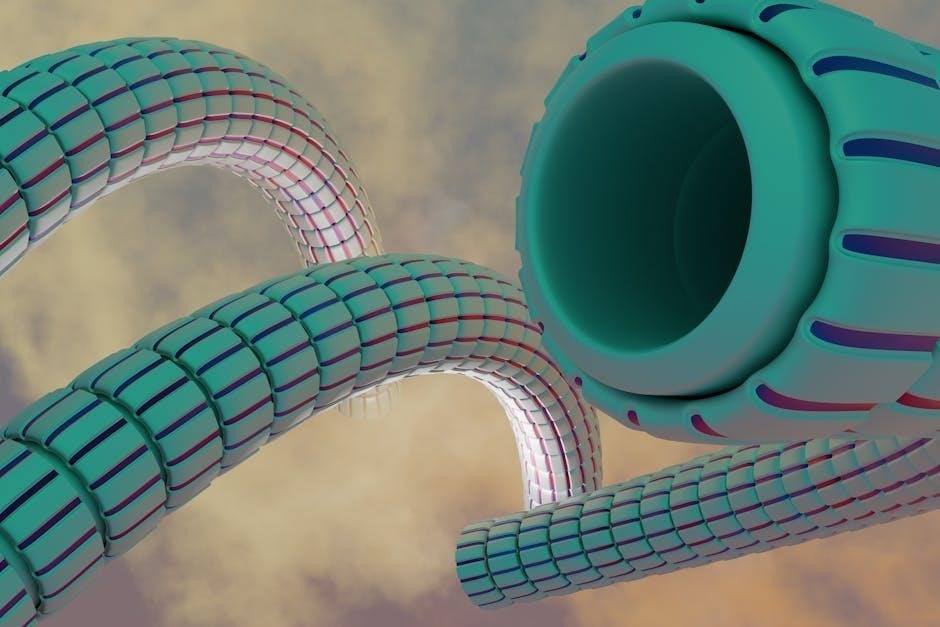
Post-Cutting Procedures
After cutting, smooth the edges with a file or sandpaper to remove burrs. Inspect the cut for accuracy and cleanliness, ensuring no jagged edges remain.
Deburring and Smoothing the Cut
Deburring and smoothing are crucial steps after cutting the steerer tube. Use a file or sandpaper to remove sharp edges and burrs, ensuring a clean finish. This prevents damage to components and improves safety. Lightly sand the cut area to create a smooth surface, which helps in achieving precise fits and avoids potential wear on parts like the stem or spacers. Proper deburring ensures the steerer tube is safe and functions optimally.
Inspecting the Cut for Accuracy
After cutting, inspect the steerer tube for accuracy. Use a caliper to ensure the cut length matches your measurements. Visually check the cut for straightness and any remaining burrs. A clean, precise cut ensures proper fitment of components like the stem and spacers. If the cut is uneven or too short, it may compromise the bike’s performance and safety. A smooth, accurate cut guarantees optimal functionality and longevity of the steerer tube and surrounding components.
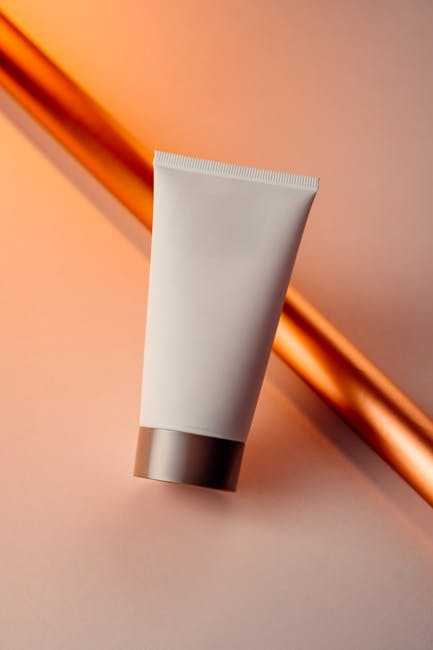
Cutting Carbon Steerer Tubes
Cutting carbon steerer tubes requires careful handling to avoid damage. Use a carbon-specific blade or tool to prevent splintering or cracking. A smooth, controlled cutting motion is essential to maintain the integrity of the material. Always employ a guide or specialized tool to ensure accuracy and safety. Carbon tubes are lightweight yet rigid, making precise cuts critical for proper component fitment and overall bike performance. Avoid excessive pressure, which can cause damage or compromise the tube’s structural integrity.
Special Considerations for Carbon Material
Cutting carbon steerer tubes demands extra care to prevent damage; Use a blade or tool specifically designed for carbon to avoid splintering or cracking. A steady, controlled cutting motion is crucial to maintain the material’s integrity. Always use a guide or specialized tool for accuracy. Carbon’s lightweight and rigid properties require precise cuts for proper component fitment. Avoid applying too much pressure, as it can compromise the tube’s structure. Ensure the tool is clean and free from debris to prevent unintended damage during the cutting process.
Best Practices to Avoid Damage
To prevent damage when cutting a carbon steerer tube, use a saw with a fine-tooth blade or a specialized cutting tool. Apply steady, light pressure to avoid splintering or cracking. Ensure the tube is securely clamped or guided to maintain stability during the cut. Avoid using abrasive materials or excessive force, which can weaken the carbon structure. After cutting, inspect the edge for any imperfections and deburr smoothly to ensure a clean finish. Proper technique and the right tools are essential for maintaining the tube’s integrity and performance.
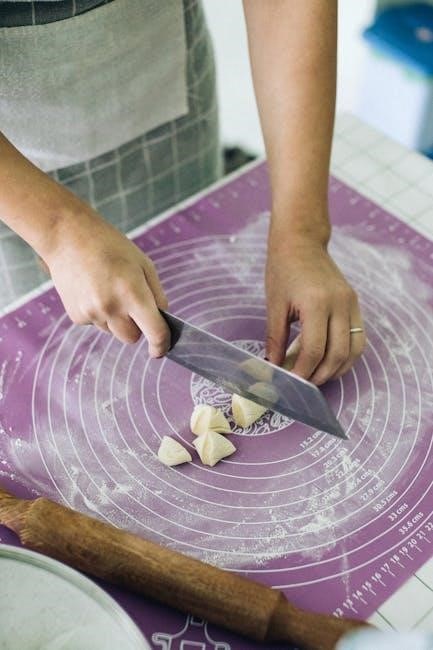
Adjustments and Fine-Tuning
After cutting, check the stem position and adjust spacers or shims as needed. Ensure the headset is properly seated and aligned for optimal performance and safety.
How to Make Minor Adjustments
After cutting, ensure the steerer tube is properly aligned with the stem and spacers. Use an Allen key to tighten stem bolts evenly, ensuring no over-tightening. Check headset alignment by gently rocking the bike, then adjust spacers or re-grease bearings if necessary. Minor height adjustments can be made by adding or removing spacers without re-cutting the tube. Always verify that the stem cap is securely fastened to maintain optimal riding position and safety.
Aligning the Stem and Spacers
Properly aligning the stem and spacers ensures a secure and functional setup. Begin by installing the dust cap and required spacers onto the steerer tube. Slide the stem over the tube, ensuring it is flush with the cut end. Tighten the stem bolts evenly using an Allen key, following the manufacturer’s torque specifications. Double-check that the stem is centered and the spacers are evenly distributed. This alignment is critical for maintaining proper headset adjustment and bike handling, as well as preventing damage to components.

Using a Cutting Guide Effectively
A cutting guide ensures precise alignment and secure setup, guiding the saw for smooth, even cuts. It minimizes errors and enhances accuracy for professional results.
Choosing the Right Cutting Guide
Selecting the correct cutting guide is crucial for precise steerer tube cuts. Look for guides compatible with your tube’s material and diameter, ensuring a snug fit. Adjustable models accommodate various sizes, while fixed guides offer stability for specific diameters. Consider guides with built-in alignment features to prevent uneven cuts. Durable materials, like steel or high-grade plastics, ensure longevity. Some guides, like the Park Tools SG-6 or Abbey Bike Tools offerings, are designed for professional results. Always check compatibility with your tools and tube dimensions for optimal performance.
Securing the Guide for Accurate Cuts
To ensure precise cuts, securely clamp the cutting guide to the steerer tube, aligning it with your marked line. Use a vice to hold the fork steady, preventing movement during cutting. Tighten the guide firmly but avoid over-tightening, which could damage the tube. Double-check the alignment to confirm the guide is straight and properly positioned. This setup ensures a clean, accurate cut and minimizes the risk of errors. Always verify stability before proceeding with the cutting process.
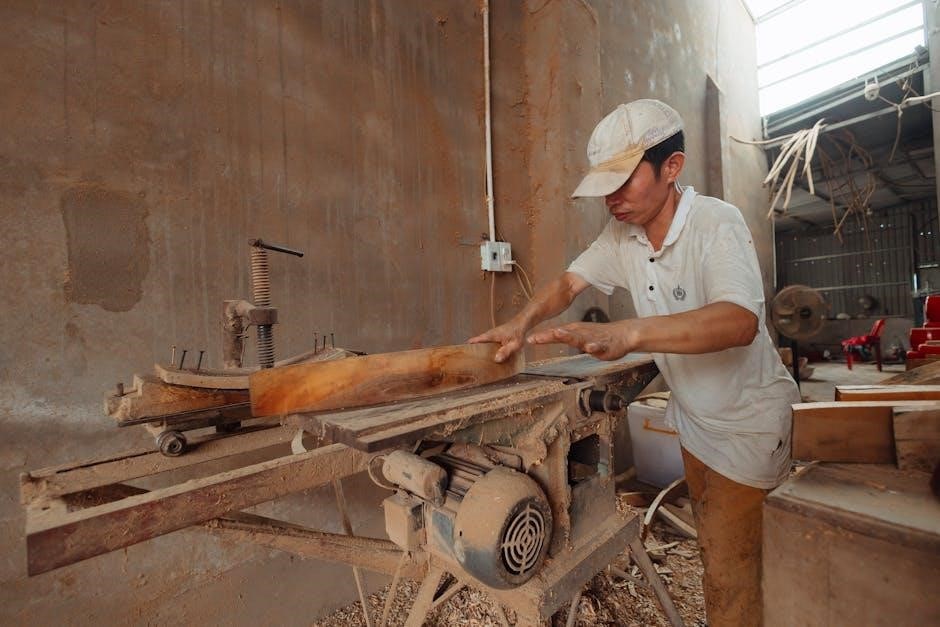
Expert Tips and Tricks
- Use a hacksaw with a guide for straight cuts, ensuring minimal burrs and smooth edges.
- Choose the right blade for your steerer material to avoid damage and achieve precise results.
Avoiding Common Mistakes
When cutting a steerer tube, common mistakes include uneven cuts, burrs, and misalignment. To avoid these, use a high-quality cutting guide and ensure the blade is properly aligned with the mark. Avoid using makeshift tools like pipe clamps, as they can lead to crooked cuts. Always verify measurements before cutting and use the correct blade type for your steerer material. Cutting too aggressively can cause jagged edges, so maintain a steady, controlled motion. Properly securing the guide and tube in a vice is essential for accuracy and safety.
Professional Techniques for Clean Cuts
For professional results, use a high-quality hacksaw or pipe cutter with a dedicated cutting guide. Ensure the guide is securely clamped to prevent slipping. Apply steady, controlled strokes, maintaining consistent pressure to avoid jagged edges. Use the correct blade type for your steerer material, as specified by the manufacturer. Properly align the blade with the marked line and let the tool do the work without applying excessive force. This ensures a smooth, precise cut that requires minimal deburring afterward, achieving a professional finish every time.
Troubleshooting Common Issues
Common problems include uneven cuts, burrs, or misaligned cuts. Use a cutting guide for precision and ensure proper tool selection to avoid these issues and achieve clean results.
Dealing with Uneven Cuts
Uneven cuts can compromise the steerer tube’s structural integrity. To address this, inspect the cutting tool’s alignment and blade sharpness. If the cut is slightly uneven, sanding can smooth the edge. For significant misalignment, reassess your cutting guide placement or consider using a dedicated steerer cutting tool. Proper clamping and consistent sawing motion are crucial to prevent unevenness. Ensure the blade remains perpendicular to the tube throughout the process. If the issue persists, start over with a fresh, accurately marked cut.
Fixing Burr or Jagged Edges
Burr or jagged edges on a steerer tube can cause damage or injury. After cutting, use a file or sandpaper to smooth the edges. Start with coarse grit and progress to fine for a polished finish. A deburring tool can also be used for quick results. Ensure all metal shavings are removed and inspect the cut for remaining imperfections. Properly smoothing the edges prevents interference with headset components and maintains a safe, professional finish. Always wear gloves during this process to avoid injury from sharp edges.
